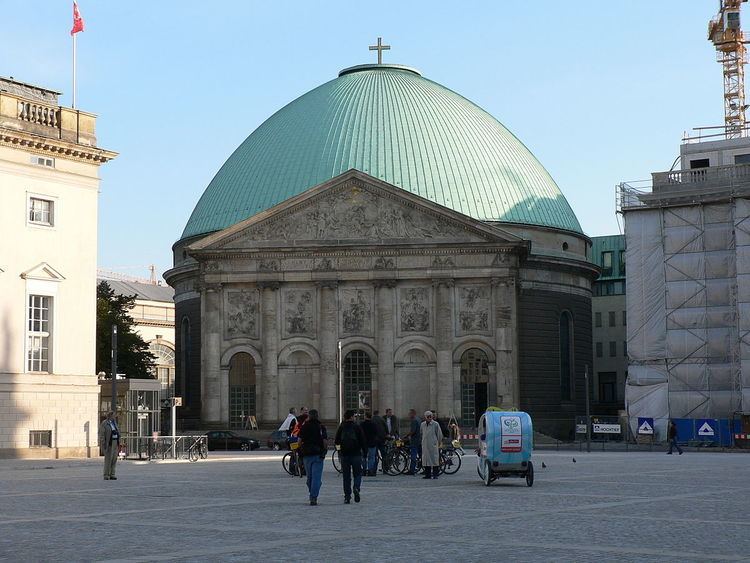Year consecrated 1773 Phone +49 30 2034810 | Opened 1773 Architectural style Neoclassical architecture | |
 | ||
District 1st deanery Berlin-Mitte Website www.hedwigs-kathedrale.de Address Hinter der Katholischen Kirche 3, 10117 Berlin, Germany Similar Bebelplatz, Neue Wache, Berlin Cathedral, Neue Kirche - Berlin, French Cathedral - Berlin | ||
St hedwig s cathedral in berlin
St. Hedwig's Cathedral (German: Sankt-Hedwigs-Kathedrale) is a Roman Catholic cathedral on the Bebelplatz in Berlin, Germany. It is the seat of the archbishop of Berlin.
Contents
- St hedwig s cathedral in berlin
- Chancel choir st hedwig s cathedral
- History and architecture
- Tapestries
- Burials in the crypt
- Gallery
- References
Chancel choir st hedwig s cathedral
History and architecture
St. Hedwig's Church was built in the 18th century following a request from local parishioners to King Frederick II. He donated the land on which the church was built. The church was dedicated to the patron of Silesia and Brandenburg, Saint Hedwig of Andechs. It was the first Catholic church built in Prussia after the Protestant Reformation. The building was designed by Georg Wenzeslaus von Knobelsdorff and modeled after the Pantheon in Rome. Construction started in 1747, interrupted and delayed several times by economic problems. It was not opened until November 1, 1773, when the king's friend, Ignacy Krasicki, the Bishop of Warmia (later Archbishop of Gniezno), officiated at the cathedral's consecration.
After the Kristallnacht pogroms that took place over the night of 9–10 November 1938, Bernhard Lichtenberg, a canon of the cathedral chapter of St Hedwig since 1931, prayed publicly for Jews in the evening prayer following. Lichtenberg was later jailed by the Nazis and died on the way to the concentration camp at Dachau. In 1965 Lichtenberg's remains were transferred to the crypt at St. Hedwig's.
The cathedral was severely damaged by allied bombing in an air raid on 1 March 1943. Only the damaged shell of the building was left standing. Reconstruction started in 1952 and on the 1st of November 1963, All Saints' Day, the new high altar was consecrated by the Bishop of Berlin, Alfred Cardinal Bengsch.
Between 1949 and 1990 St. Hedwig's was in East Berlin, under the control of the East German government.
Tapestries
Three impressive tapestries are now used in the reconstructed catherdral. All three share the motif of the heavenly Jerusalem but only one is set up and viewable at any one time.
The tapestry of former Bauhaus student Margaretha Reichardt (Grete Reichardt) (1907 - 1984) of Erfurt was handwoven in 1963. It depicts a stylised city with the names of the apostles inscribed on foundation stones. God is represented by the Tree of Life and a lamb features as a symbol of Christ.
de:Anton Wendling (1891 - 1965) made a colorful appliqué work. It is a geometric composition using themes from the Book of Revelation.
The three-part woven carpet made by de:Else Bechteler-Moses (1933 - ) was made in cooperation with Nürnberger Gobelinmanufaktur GmbH, a tapestry weaving company, between 1979 and 1981. This also uses themes from Revelations.
